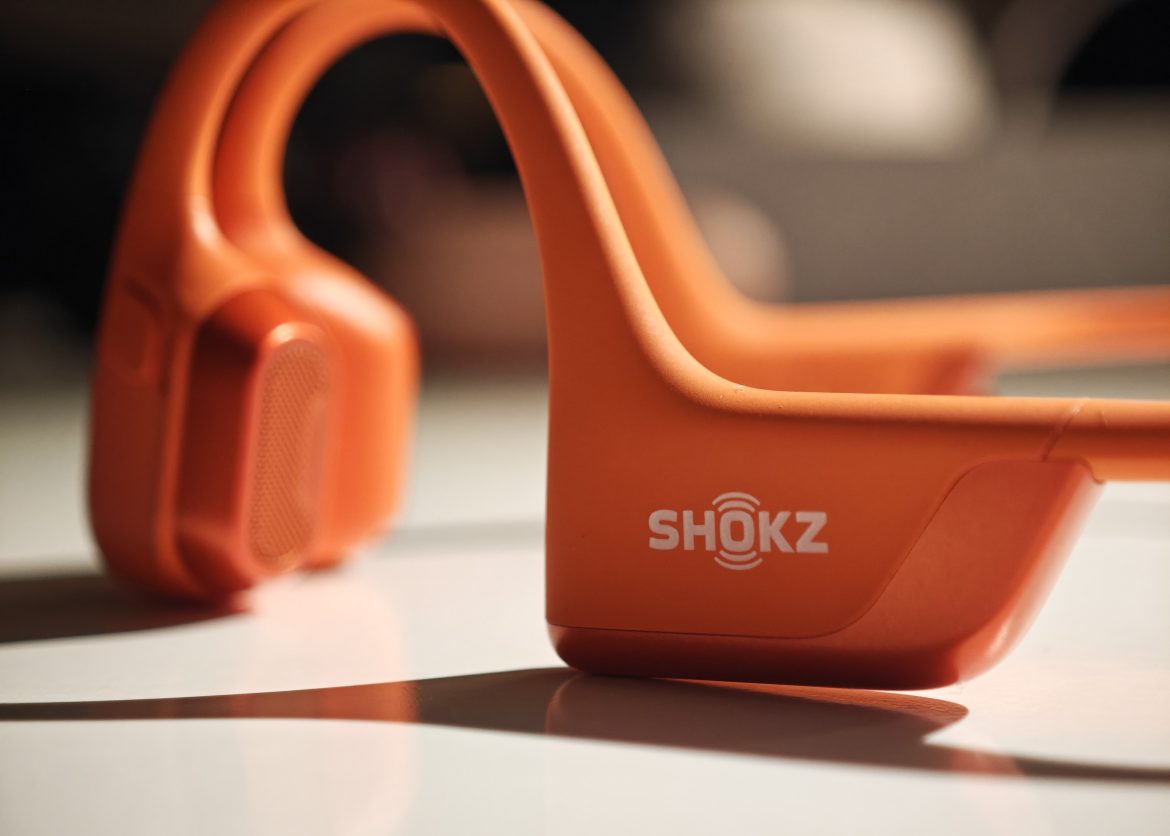TL;DR
Shokz OpenRun Pro 2 headphones leverage bone conduction for situational awareness, excelling in outdoor runs and office calls with their comfortable, open-ear design. While stylish and offering good sound, they struggle with loud gym noise and can have wind interference during cycling at higher speeds. The Mini size is recommended for most users. If you prioritize awareness during activities and need great headset functionality, these are worth a look, but consider your primary workout environments. Dive into the full review to see if they're the perfect fit for your needs!
In 2021, Shokz (formerly known as Aftershokz) celebrated its tenth anniversary as a pioneer in bone conduction technology. The company collaborates with elite runners like Eliud Kipchoge to develop specialized running headphones. This review focuses on the tenth-generation Shokz OpenRun 2 Pro (Mini), a training headphone designed for comfort, sound quality, and environmental awareness. We evaluated its performance in diverse settings, including gyms, urban and natural running trails, cycling routes, and office environments, where, like the Shokz Open Fit and Shokz Open Fit Air, its headset functionality offers distinct advantages.
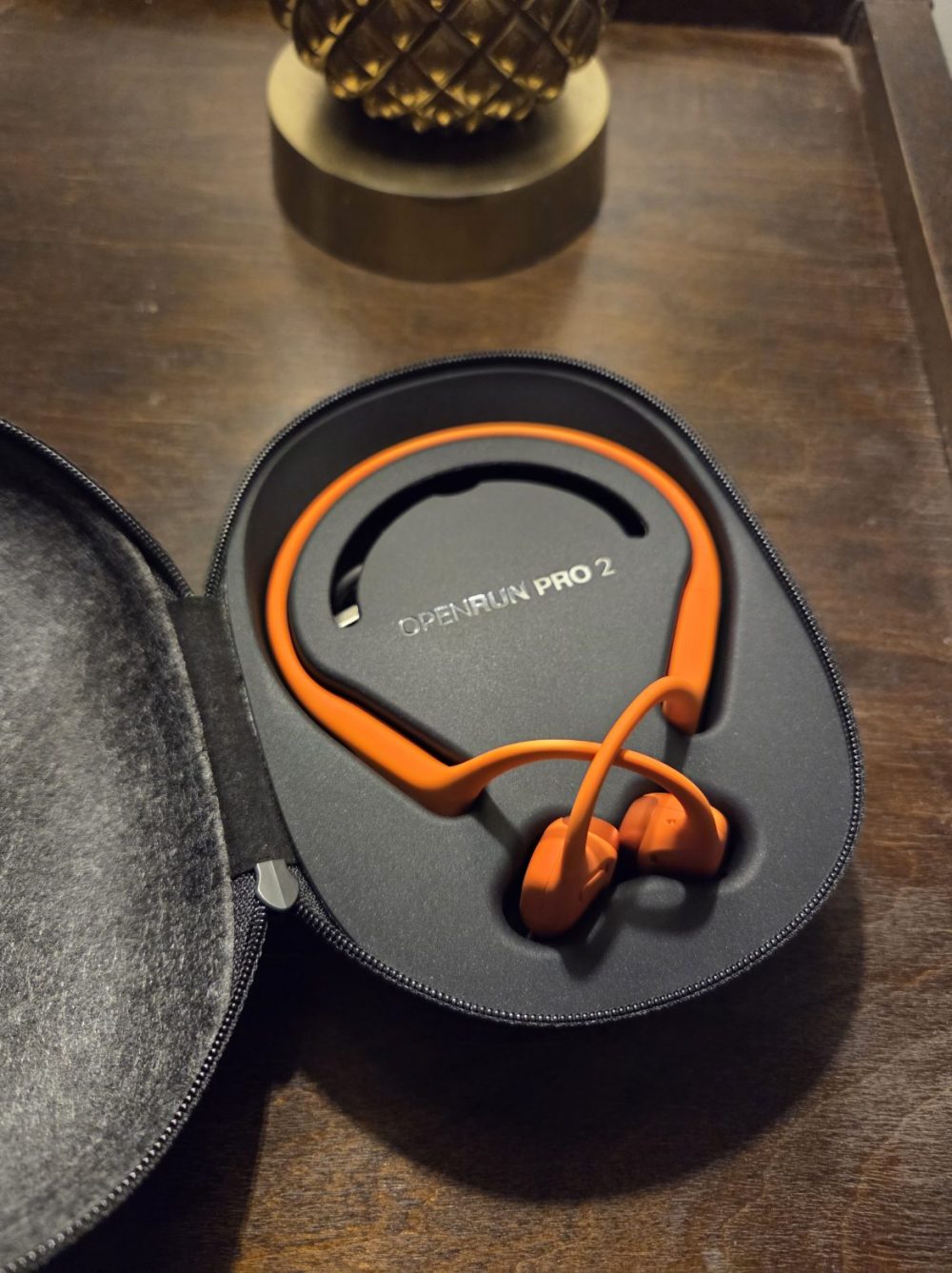
Elegant and colorful
The design and presentation of these training headphones are surprisingly refined, contrasting with the more overtly sporty aesthetics of models like the Sennheiser Momentum Sport or the Jabra Elite 8 Active Gen 2. While the case contributes to this impression, the headphones themselves, particularly in the vibrant orange color, possess a sleek and energetic appeal.
The OpenRun Pro 2 is specifically designed for sports, especially running. It is available in two sizes, with the Mini version featuring a 2.1 cm shorter neckband. To determine the appropriate size, we measured two test subjects: a 192 cm tall man and a 160 cm tall woman. Their neck measurements were 8.5 inches and 7 inches, respectively. Both qualified for the Mini version, as the size limit is 9.25 inches.
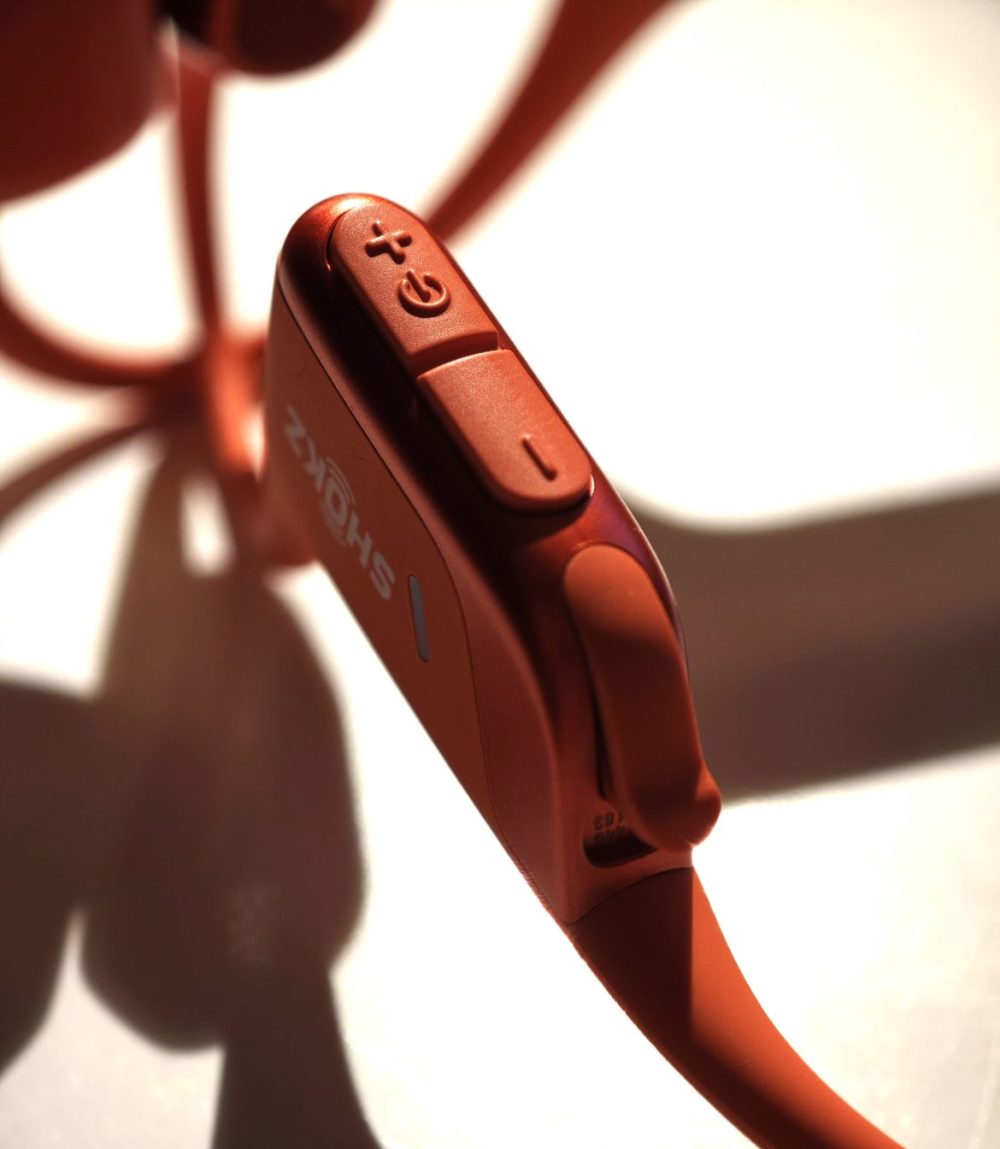
Controls Shokz OpenRun Pro 2
The underside of the headphones features two buttons for power and volume control. The left earcup houses a multi-function button for play/pause, track navigation, and call management. These controls are fixed in their functions. While this simplicity is generally sufficient, the OpenRun Pro 2’s capabilities as a headset suggest potential for more advanced control options, which will be addressed later.
The button configuration differs from the Open Fit, which offers more customization despite its limitations of double-tap and long-press gestures. We anticipate testing Shokz’s upcoming Open Fit 2, featuring both touch and physical buttons, with the expectation of expanded control functionalities. Further evaluation is required to confirm these improvements.
The companion app allows users to create custom EQ profiles, a feature also recently added to the Open Fit and Open Fit Air via a software update. The app, simply named “Shokz,” also enables multipoint pairing (connecting to two devices simultaneously) and firmware updates, which Shokz regularly releases to introduce new features.
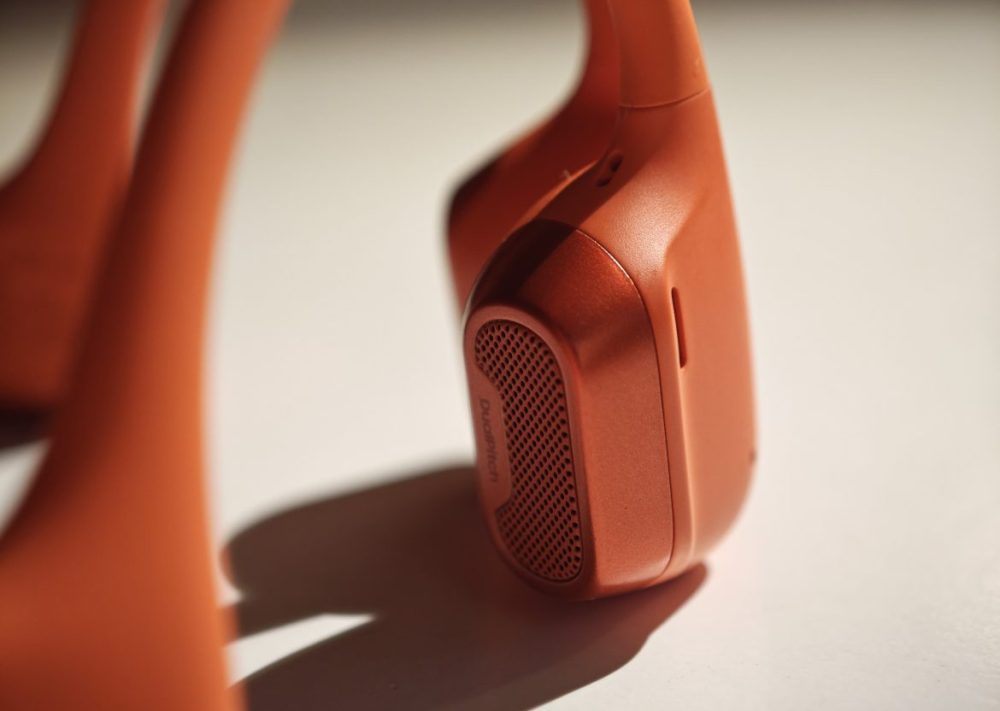
The experience
We evaluated the OpenRun Pro 2 in various usage scenarios. The open-ear design provides the distinct advantage of maintaining situational awareness during outdoor activities like running, particularly in environments with traffic. The bone conduction technology delivers a more pronounced sound experience compared to the speaker-based Shokz Open Fit. On treadmills, however, the gym’s ambient noise tends to overwhelm the headphone audio, making it less than ideal for indoor workouts. This observation raises the possibility of needing multiple headphone options for different environments.
During cycling, the OpenRun Pro 2 exhibits surprisingly low wind noise at moderate speeds, enhancing the listening experience. However, at higher speeds, wind noise generates an overemphasis on midrange frequencies, which can become distracting. The neckband can also exert pressure on the headphones depending on the rider’s posture, affecting the sound. For cycling, the Shokz Open Fit, which rests solely on the ears, may be preferable. Consequently, the OpenRun Pro 2 is best suited for upright cycling at lower speeds, such as commuting, where environmental awareness is paramount and the sound quality remains commendable. For running, the OpenRun Pro 2 performs well in relatively quiet environments where situational awareness is crucial.
The OpenRun Pro 2, similar to the Open Fit, excels as a headset. Its ability to play music and handle calls in an office setting is highly beneficial. While these features are not unique, the simultaneous awareness of the surrounding environment, allowing users to monitor their own voice volume and detect approaching colleagues, makes the OpenRun Pro 2 exceptional. The comfortable design enables extended wear. However, users who wear glasses should test the fit beforehand, as the combined presence of glasses and the headphone arms may cause discomfort.
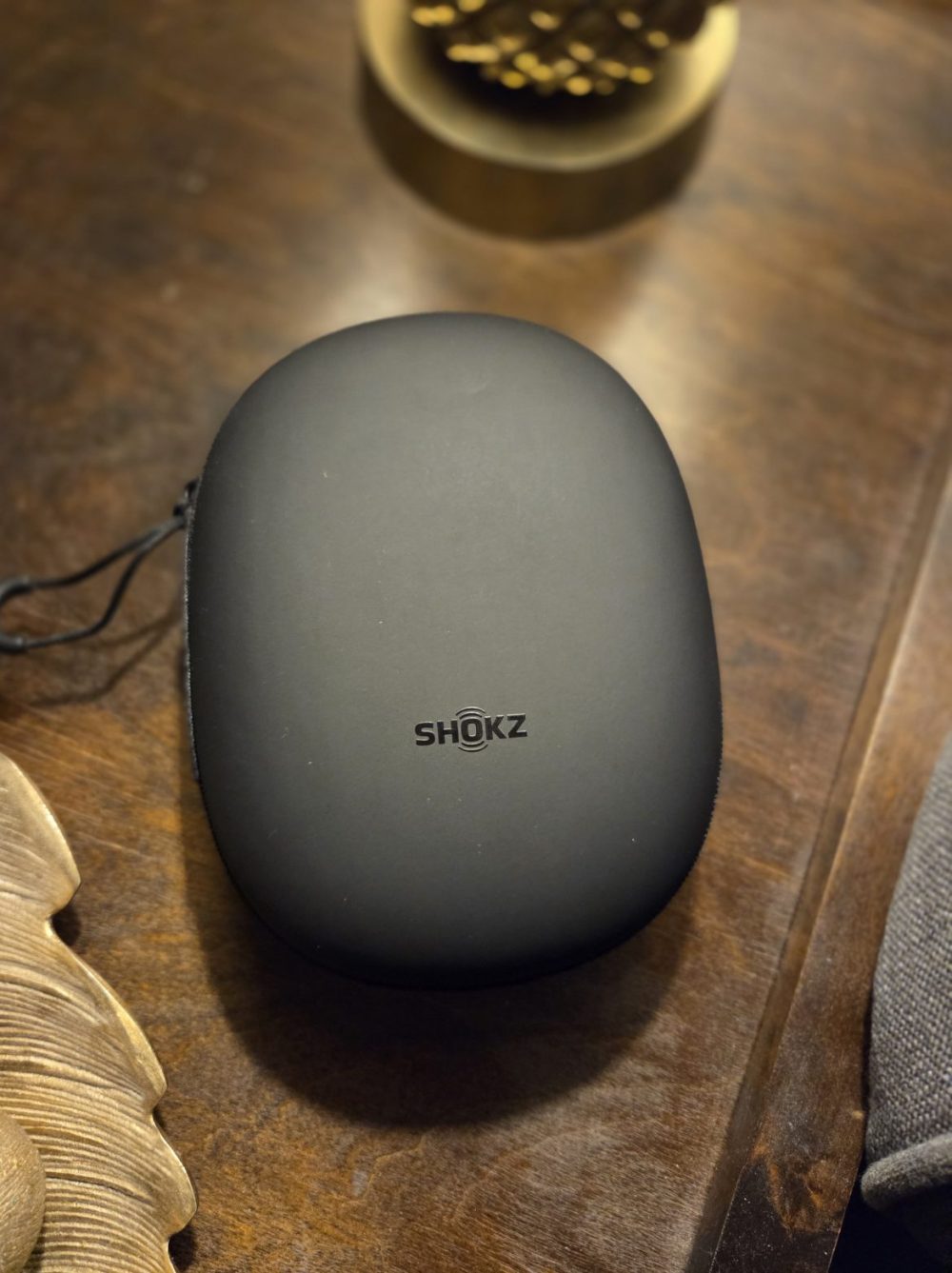
Conclusion
Shokz’s experience and pioneering status in bone conduction technology are evident in the OpenRun Pro 2’s intuitive design and functionality, despite its divergence from conventional headphones. The intended fit, operation, and applications are well-defined, offering both versatility and limitations. While we appreciate the headphones, we find the fit less ideal in certain scenarios and prefer the Open Fit or Open Fit Air in those situations. The latter are not bone conduction headphones, resulting in a different sound isolation level compared to the OpenRun Pro 2, which offers greater resistance to external noise.
The price of 2,100 Swedish kronor is a significant investment for headphones that may not be suitable for all environments. This is a key consideration, as the OpenRun Pro 2’s performance is compromised on public transport and somewhat limited in gyms. Its strengths lie in outdoor activities and office environments. Alternative options like the Jabra Elite 8 Active Gen 2 offer comprehensive features, including transparency mode, for a slightly higher price (150 Swedish kronor more).
However, no other headphone design provides the same level of environmental awareness as open-ear headphones while simultaneously delivering a satisfying audio experience. This is where the Shokz OpenRun Pro 2 truly excels.
Shokz provided review units for this evaluation. The provision of review materials does not influence our editorial independence, and we maintain a consumer-focused perspective in all our reviews.
